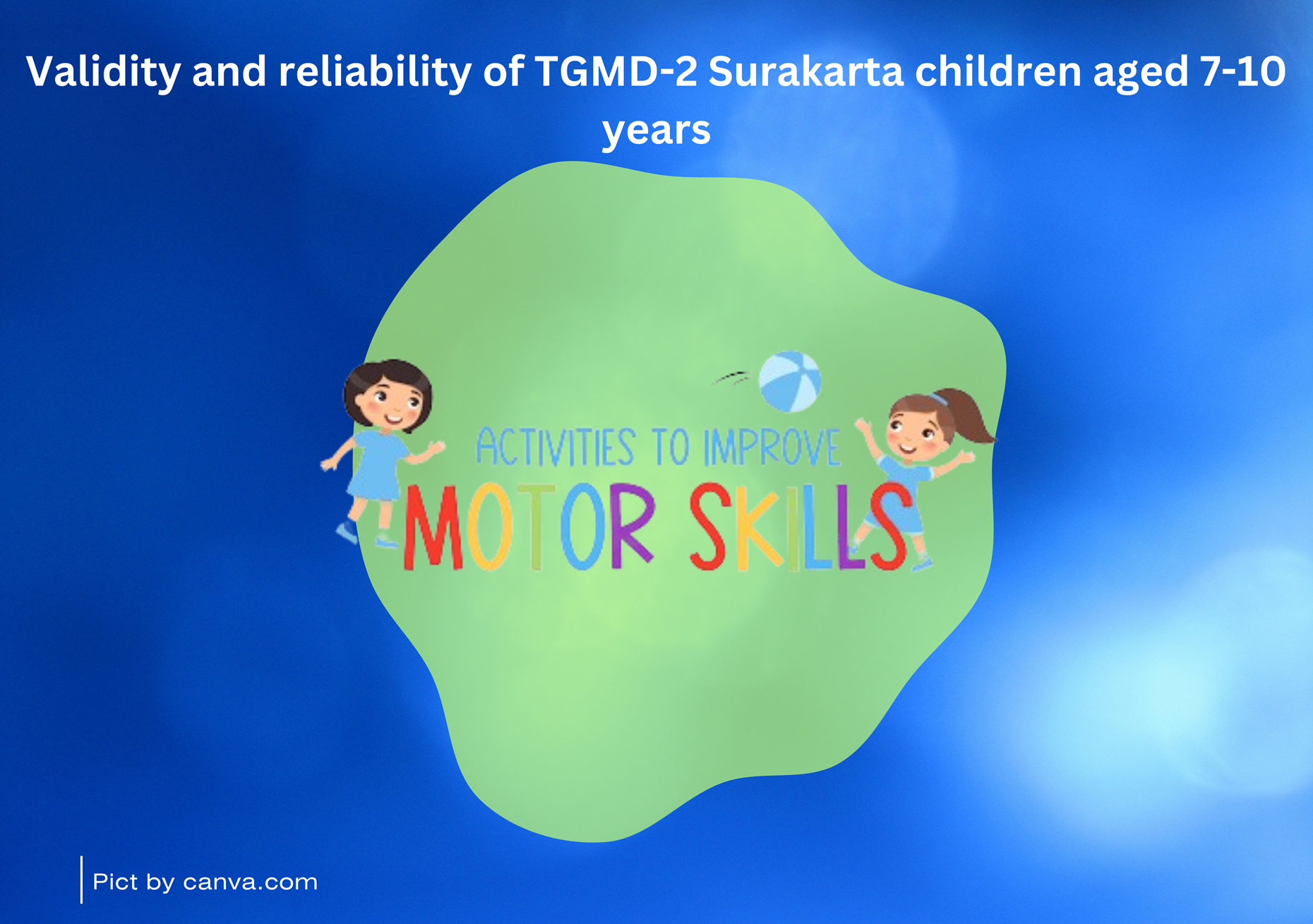Validity and reliability of TGMD-2 Surakarta children aged 7-10 years
DOI:
https://doi.org/10.17977/um086v1i12023p73-77Keywords:
TGMD-2, exploratory factor analysis, construct validity, gross motor skill assessmentAbstract
Motor assessment tests are widely used in many countries, including the Gross Motor Development Test 2 (TGMD-2). TGMD-2 is the most frequently used test to measure children's gross motor development in many countries. The purpose of this research is to be investigated whether TGMD-2 is suitable for measuring gross motor development in Surakarta boys aged 7-10 years. The participants involved in this study were 355 boys aged between 7-10 years, who attended state elementary school. Construct validity was calculated by Exploratory Factor Analysis, and reliability by Cronbach's Alpha. The result of the calculation is average Keyser-Meyer-Olkin (KMO) value is 0.837. This figure indicates that TGMD-2 is good for confirmation purposes. While the reliability is 0.743, categorized as medium. In conclusion, thus it can be concluded that TGMD-2 can used to assess gross motor development of the studied population.
References
Andrade, H. L., & Heritage, M. (2017). Using formative assessment to enhance learning, achievement, and academic self-regulation. Routledge. https://doi.org/10.4324/9781315623856
Bukvić, Z., Nikolić, D., & Ćirović, D. (2021). The importance of physical activity for the development of motor skills of younger school age children. Medicinski podmladak, 72(2), 34-39. https://doi.org/10.5937/mp72-31878
Choo, Y. Y., Agarwal, P., How, C. H., & Yeleswarapu, S. P. (2019). Developmental delay: identification and management at primary care level. Singapore medical journal, 60(3), 119. https://doi.org/10.11622%2Fsmedj.2019025
Garson, G. D. (2012). Testing statistical assumptions. Asheboro, NC: Statistical Associates Publishing
Ismaryati. (2018), Tes & Pengukuran Olahraga, Surakarta. UNS Press
Kartowagiran, B., & Jaedun, A. (2016). Model asesmen autentik untuk menilai hasil belajar siswa sekolah menengah pertama (SMP): Implementasi asesmen autentik di SMP. Jurnal penelitian dan evaluasi pendidikan, 20(2), 131-141. http://dx.doi.org/10.21831/pep.v20i2.10063
Lopes, V. P., Stodden, D. F., & Rodrigues, L. P. (2017). Effectiveness of physical education to promote motor competence in primary school children. Physical Education and Sport Pedagogy, 22(6), 589-602. https://doi.org/10.1080/17408989.2017.1341474
Rajiv, S. J, I-Chant A. C., Carrie, C., & Dana, C. L. (2020), Research Methods in Psychology 4nd Edition. Kwantlen Polytechnic University Surrey, BC.
Taber, K. S. (2018). The use of Cronbach’s alpha when developing and reporting research instruments in science education. Research in science education, 48, 1273-1296. https://doi.org/10.1007/s11165-016-9602-2
Ulrich, D. A. (2000). Test of gross motor development 2: Examiner’s manual (2nd ed.). Austin, TX: PRO-ED.
Watkins, M. W. (2018). Exploratory factor analysis: A guide to best practice. Journal of Black Psychology, 44(3), 219-246. https://doi.org/10.1177/0095798418771807

Downloads
Published
How to Cite
Issue
Section
License
Copyright (c) 2023 Ismaryati Ismaryati, Bambang Wijanarko, Islahuzzaman Nuryadin, Rumi Iqbal Doewes, Muhammad Muhyi

This work is licensed under a Creative Commons Attribution-ShareAlike 4.0 International License.










